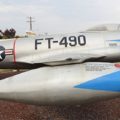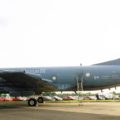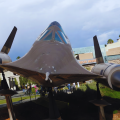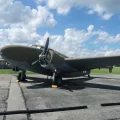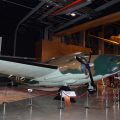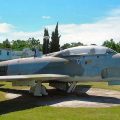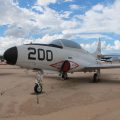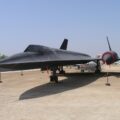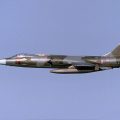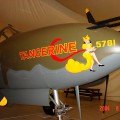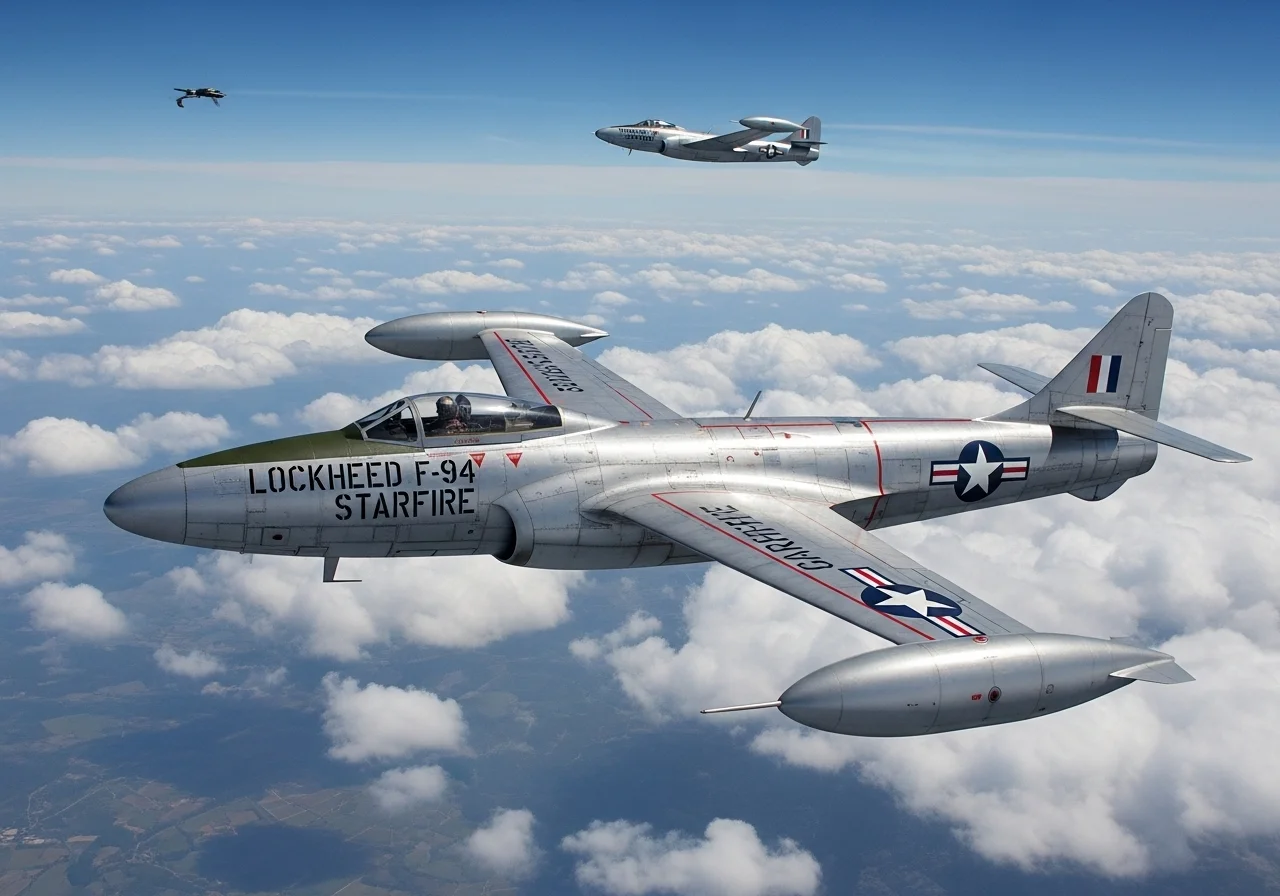
Lockheed F-94 Starfire | |
|---|---|
| 国 | 米国 |
| 役割 | 全天候迎撃機 |
| 初飛行 | 1949年4月16日 |
| 構築 | 855 |
ザ ロッキードF-94スターファイア was a first-generation jet aircraft of the United States Air Force. It was developed from the twin-seat Lockheed T-33 Shooting Star in the late 1940s as an all-weather, day/night interceptor. The aircraft reached operational service in May 1950 with Air Defense Command, replacing the piston-engined North American F-82 Twin Mustang in the all-weather interceptor role. The F-94 was the first operational USAF fighter equipped with an afterburner and was the first jet-powered all-weather fighter to enter combat during the Korean War in January 1953. It had a relatively brief operational life, being replaced in the mid-1950s by the Northrop F-89 Scorpion and North American F-86D Sabre. The last aircraft left active-duty service in 1958 and Air National Guard service in 1959.
| Lockheed F-94A Starfire Walk Around | |
|---|---|
| カメラマン | ウラジーミル・ヤクボフ |
| ローカライズ | アメリカ国立博物館 |
| 写真 | 56 |
| Lockheed F-94C Starfire Walk Around | |
|---|---|
| カメラマン | ジョン・ヘック |
| ローカライズ | 知りません |
| 写真 | 29 |
関連項目:
ザ ロッキードF-94スターファイア was a jet-powered interceptor that served in the United States Air Force from 1950 to 1958. It was designed to provide all-weather, day/night defense against enemy bombers, especially the Soviet Tupolev Tu-4. The F-94 was based on the Lockheed T-33 Shooting Star trainer, but had a longer nose to accommodate a radar and a fire control system.
It was also equipped with an afterburner, which gave it a speed boost and made it the first operational USAF fighter with this feature.
F-94にはパイロットとレーダーオペレーターの2人の乗組員がいた。の主武装は、 キ94 機首に0.50インチ機関銃4挺を搭載し、後のバージョンでは空対空ロケット弾も搭載された。F-94は防空司令部と空軍州兵のさまざまな部隊に配備され、朝鮮戦争中に戦闘行動を起こし、敵機に対していくつかの勝利を収めました。F-94は最終的にノースロップF-89スコーピオンやノースアメリカンF-86Dセイバーなどのより高度な迎撃機に置き換えられました。
再生 : 3029


